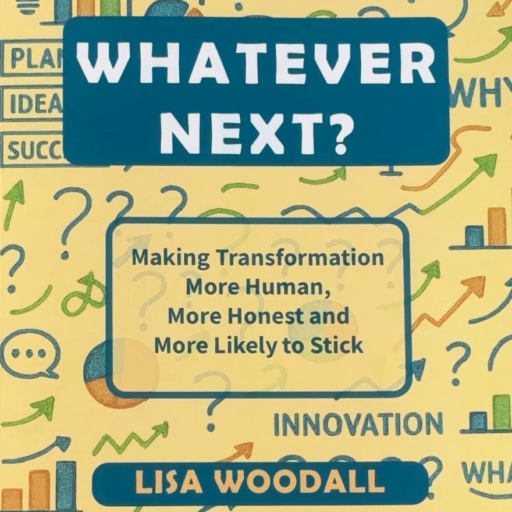Q1: Which chapters were the easiest to write?
A: Rewire and Reconnect. Rewire was deeply personal (as I explain in the “Why It’s Personal” section), and Reconnect flowed because it drew directly on my most recent role.
Q2: Which chapter was the hardest?
A: Reframe. It’s all about scope, what and when. For me, that space can feel like holding back. I prefer to imagine, sketch the plan, and get on with rewiring. Spending time reframing doesn’t come naturally, but I’ve learned it brings huge value.
Q3: Was there a chapter you thought would be easy but turned out harder than expected?
A: Yes, Reflect. I thought it would flow because I’ve written reflectively for years. But shaping it into something coherent for others to use, not just my own journaling, was tougher than I expected.
Q4: Were some stories easier to recall than others?
A: Definitely. Involve, Evolve, Solve is still vivid despite being years ago, it was such a memorable event. A Day in the Life also stands out as a strong research story. They almost wrote themselves. Others took more digging pulling fragments out of memory and stitching them back together.
Q5: Were there any stories you had to leave out?
A: Yes, quite a few. Many transformation programmes are covered by NDAs, and since my LinkedIn profile makes my career history clear, being too explicit could have caused problems. So I left those out.
Q6: Were there stories you almost left out but then decided to keep?
A: Yes, the more personal ones. At first I hesitated, but I realised the book needed honesty as much as expertise. Those stories are what make the lessons real.
Q7: Which parts of the book feel most personal to you?
A: Rewire. It links directly to my lived experience—moments that shaped how I see organisations and the human cost of change. That chapter holds the most of “me” in it.
Q8: How did you know when to stop writing?
A: The five lenses gave me guiderails. Early drafts had much longer prefaces, but early reader feedback pushed me to cut them down. I also aimed to keep the book to around 200 pages, enough for someone to read over a few days without it feeling heavy. The lenses and page limit together told me when to stop.
Q9: Did writing the book change how you see your own work?
A: Yes. Writing forced me to step back and connect dots I hadn’t fully seen before. I’d lived the stories, but putting them on the page showed me patterns and lessons that weren’t obvious in the moment.
Q10: Do you wish you’d written the book earlier in your career?
A: No. Earlier it would have been one lens at a time. Now, with the benefit of experience, I can see how essential all five lenses are together. That perspective only came with time.
And that’s why the book exists now, not before—because it needed years of stories, mistakes, and insights to make sense as a whole.
If you’d like to read it for yourself, just head to the website, press Buy, and I’ll make sure a copy finds its way to you.

